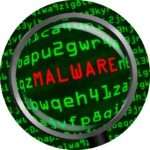Malware, short for “Malicious Software,” is a broad term used to describe any software specifically designed to harm, exploit, or infiltrate computer systems or devices without the knowledge and consent of the user. Malware is typically created with malicious intent, and it can take various forms including viruses, trojans, worms, ransomware, spywear and more. Malware can be delivered through various means, including email attachments, malicious websites, infected software downloads, and even physical media.
Protecting your devices against malware is essential to maintain the security and privacy of your data. It involves using up-to-date antivirus software, practicing safe internet browsing and email habits, and keeping your operating system and software patched and updated to address vulnerabilities that could be exploited by malware.
Keep these protective measures in mind to guard your devices against malware:
Install Antivirus Software – Use reputable antivirus and anti-malware software on your devices. Keep the software updated and schedule regular scans.
Keep Your Operating System Updated – Ensure your operating system (e.g. Windows, macOS, or Linux) is regularly updated with the latest security patches and updates. Enable automatic updates whenever possible.
Keep Software and Applications Updated – Regularly update all software, including web browsers, plugins, and applications. Many malware attacks exploit vulnerabilities in outdated software.
Exercise Caution with Email – Be wary of unsolicited emails and attachments. Do not open email attachments from unknown or suspicious sources. Be cautious of email links, especially if they seem suspicious or ask for personal information.
Enable a Firewall – Activate the built-in firewall on your computer or install a third-party firewall to monitor and control incoming and outgoing network traffic.
Use Strong and Unique Passwords – Employ strong, unique passwords for your accounts and devices. Consider using a password manager to help generate and store complex passwords.
Enable Two-Factor Authentication – Whenever possible, enable two factor authentication for your online accounts to add an extra layer of security.
Be Cautious with Downloads – Only download software and files from reputable sources. Avoid downloading files or apps from untrustworthy websites.
Secure Your Network – Set a strong password for your Wi-Fi network and use encryption if available. Regularly change the default router login credentials.
Stay Educated and Practice Safe Browsing – Stay informed about the latest malware threats and cybersecurity best practices. Be cautious when clicking on links, especially those offering something too good to be true.
Back-up Your Data – Regularly back up your data to an external device or a cloud service. In case of a malware attack, you can restore your data without paying a ransom or losing important files.
Use a Standard User Account – Avoid using an administrator account for everyday tasks. Use a standard user account for regular activities to limit the potential impact of malware.
Monitor Your Devices – Keep an eye on your devices for unusual behavior, such as increased system usage, unexpected pop-ups, or a slowdown in performance.
Secure Mobile Devices – Apply the same protective measures to your mobile devices (smartphone and tablets). Install security apps and keep your mobile operating system and apps updated.
Consider Additional Security Software – Depending on your specific needs and concerns, you may want to use additional security tools like anti-malware, anti-phishing, or VPN software.
By implementing these protective measures and staying vigilant, you can significantly reduce the risk of malware on your devices and enhance your overall cybersecurity.
SDP payroll professionals assist our clients with payroll, workforce management, benefits administration, and human resources needs. To get started or learn more about these solutions, simply contact us today.
We also invite you to meet with us today for a complimentary HR consultation and to learn how we can support objectives, overcome challenges, and address issues quickly and accurately.
And, for more information about Southland Data Processing, call us today at 909.946.2032. Or, click here and Let’s Talk!
For the latest updates, follow us on LinkedIn, Facebook, Twitter, YouTube, Instagram and TikTok for even more business tips and news.
*Southland Data Processing, Inc. (“SDP”) is not a law firm. This article is intended for informational purposes only and should not be relied upon in reaching a conclusion in a particular area of law. Applicability of the legal principles discussed may differ substantially in individual situations. Receipt of this or any other SDP materials does not create an attorney-client relationship. SDP is not responsible for any inadvertent errors that may occur in the publishing process.


